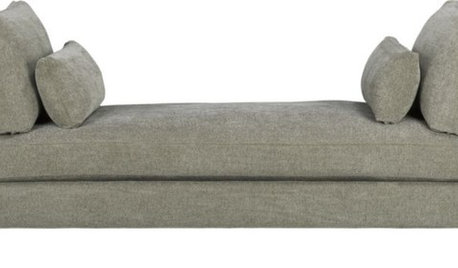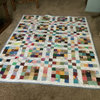It's a question a neighbor asked me a while back. After talking about how our parents/grandparents used to use old blankets instead of "boughten" batting, she wanted to know if there was any reason she couldn't use a polyester fleece blanket instead of batting? She pointed out that they are machine wash/dryable, non-allergenic, light-weight, and hold their loft very well.
I've tried out a heavy non-pilling fleece (purchased by-the-yard) and a light-weight blanket re-purposed. The only negative I can find is that it *will* stretch if pulled on while pinning; but so does standard poly batting. Both also made more lint in the sewing machine, but not much more than 100% cotton. If you are already in the habit of regularly dusting the presser foot and bobbin areas, you may not even notice the extra lint.
Does anyone know of any other reason not use a fleece blanket as batting?









geezerfolks_SharonG_FL
mary_c_gw
Related Professionals
Carlsbad Furniture & Accessories · Reno Furniture & Accessories · Surprise Furniture & Accessories · Wilmington Furniture & Accessories · Northridge Furniture & Accessories · Pinehurst Furniture & Accessories · Chula Vista Flooring Contractors · Laconia Flooring Contractors · New Orleans Flooring Contractors · Pittsburg Flooring Contractors · Silver Spring Flooring Contractors · Troy Flooring Contractors · Alum Rock Flooring Contractors · Kirkland Furniture & Accessories · Norwalk Furniture & Accessoriescalliope
littlehelen_gw
mary_c_gw
littlehelen_gw
meldy_nvaOriginal Author
calliope
meldy_nvaOriginal Author
calliope
nannykins
K8Orlando
meldy_nvaOriginal Author
calliope
meldy_nvaOriginal Author
calliope